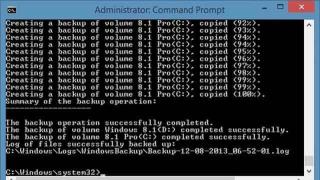In order to put a password on a WinRAR archive, you must first create it, since the archiver allows you to set password protection only before starting the file compression process. If you have a ready-made archive that you want to “password-protect”, then you first need to unzip it, and then repack it, but with a password.
Let's show an example. Let's say we have a contract or any other document (or photo, video - whatever) that we want to archive and protect from prying eyes. In our case, this is the Agreement.docx document.
Let's archive it. Right-click on the document and select archive using WinRAR.

A window will open in which you can change the compression level, select the archive format, split it into volumes and set a password for it. Click on the button of the same name.

* in previous versions of the archiver, this button was in the "Advanced" tab.

In the window that appears, enter mine password. For convenience, you can enable its display by checking the checkbox.

Then click " OK».

And in the next window also click " OK" to begin the process of archiving your file.

That's all! Now when you try to open any files from this archive or try to extract them from there, WinRAR will ask you for a password. It is better to write it down on a piece of paper and hide it away, because it cannot be restored if lost.
Advice: use upper and lower case letters and numbers when creating your passphrase to protect it from being hacked (by brute force). The maximum possible length is 127 characters.
There is also a tool in WinRAR that resembles something like a password manager. In it, you can store all your passwords and use them to open your archives without having to enter them manually every time and remember them. You can open the dispatcher in the same window in which you set password protection by clicking on this button:

The program will warn you that you can only place passwords in the manager if no one else has access to your computer, since they are stored there in unencrypted form.

Therefore, the most reliable option is to store them on a piece of paper, or even better - in your head. If you want to use the dispatcher, click " OK' to close the warning.

After that, a window will open where you can manage your passwords - add new ones to the list, delete, change, move up and down, etc.

Once you're done with the tool, click " OK' to close it.
As you can see, password-protecting the archive in WinRAR was not difficult for us. It will not be difficult to remove the password in the same way (if you know it), but this is another instruction.
Despite the rapid development and ubiquity of broadband Internet, archiving programs do not lose their popularity. In my opinion, this is due to two things:
- Does not lose its attractiveness the ability to save space on your hard drive. Savings are sometimes very significant, if video files and “graphics” are practically not amenable to compression, then program files can be compressed quite significantly, and documents, when compressed, generally “lose weight” several tens of times;
- It is simply more comfortable to interact with one file instead of many. Collecting a bunch of documents in one folder, zipping it and then sending it by mail or putting it on an exchanger is more convenient than repeating the procedure for each transferred file separately.
In addition, the transfer of files in the form of an archive provides an additional degree of protection, because access to the archive can be "locked" with a password and this password can be transferred to the addressee via an independent communication channel (for example, via SMS). This is the function we will talk about in this article. Captain Evidence tells me that an archiver is needed to create a "password-protected" archive :)
Windows has been able to work with archives out of the box for quite some time, but this support is extremely limited, so it is preferable to use third-party solutions.
First, consider the free 7-ZIP archiver. As usual, below are detailed instructions for use:
- Find out the "bit depth" of the operating system. To do this, open "Explorer" and by right-clicking on "This PC" select "Properties";

- A window will open with overview information about the system, the value of the “System Type” parameter is of interest;

- Remember this value, close the system properties window and open the browser. Download the 32-bit version of the installer or its 64-bit version. Run the downloaded file;
- The installation procedure is extremely concise - it is only suggested to choose where to place the program files, and then click "Install";

- After the installation is completed, during which, by the way, the Russian language pack will be automatically downloaded, click "Close";

- Now you can start creating the archive. Open Explorer, right-click on the folder to be archived and select "7-zip > Add to archive" in the context menu;

- Although this is not directly provided for by the topic of the article, I will touch a little on the topic of formats supported by the program. You can select 7z, tar, wim, or zip from the Archive Format drop-down list. The popular rar format is not supported, if you want "omnivorous", use archiving in zip;

- The archive encryption settings are located in the settings block of the same name. Enter the password for the archive twice, select the encryption method in the drop-down list (AES-256 is more universal) and click OK.

When you try to unpack the archive, you will be asked for a password. 
WinRAR program
WinRAR- brilliantly executed program. This is not only the best of the archivers, but in general an example of a friendly attitude towards the user. Working with the program, especially with its latest versions, is an aesthetic pleasure.
WinRAR can be download on the website of its manufacturer: www.rarsoft.com. Like other archivers, it belongs to shareware software. Its distribution version can often be found in utility software collections.
This version differs from the previous ones simply, well, a lot of details can be found here: http://www.rarsoft.com/rarnew.htm. The latest versions of WinRAR are also characterized by the fact that, like WinZip, they integrate with Windows Explorer. This provides a convenient way to work through context menus.
The program is delivered as a single executable file wrar420ru.exe and is installed in the usual way. During installation, a dialog box opens that allows you to set installation options. In particular, here you can "associate" the program with some types of archive files - then double-clicking on their icons will automatically launch the WinRAR program. Here you can also specify where, when installing the program, its icons will be created.
It is important to understand that if you want to compress music files or photo or video files into an archive, the size of the archive will not change. The question then becomes why archive irate files? The fact is that when archiving, all files will be neatly packed into a single file and are protected during transmission by mail (thereby saving
You from adding each file when uploading to the mail for their subsequent transfer) . Everything will reach the recipient safe and sound.
Create WinRar archive with password is actually not difficult. On any folder (which we want to password-protect in Rar format), we press the right mouse button and select add to archive. And go to the next window, in which we go to the tab - Advanced and click - Set password:
Next, be sure to check the box -\u003e Encrypt file names: 
Now you can create password-protected archives, thanks to which the security of your files will be protected both at the office and at home. Remember will be able to protect your data - reliably. Do not lose passwords, they may not be recovered, and hacking is not possible.
Unpacking the received archive
As in the description of the WinZip program, we will rely as much as possible on the execution of operations from the context menu, if possible without opening the working window of the program. This approach is the most efficient.
1. Place the resulting archive in the folder where you want to unpack.
2. Open this folder and right click on the file icon. In the context menu, select WinRAR -> Extract to current folder. Here the parameter< имя папки >matches the name of the archive file. Thus, when unpacking a file, a folder of the same name is created, in which all the extracted files are placed.
P.S. The new plugin - when copying - the link will not work, relevant only for this site.
Every PC user is familiar with the concept of "archive". RAR or ZIP is a good way to store large files, since the object placed in a compressed folder takes up less disk space on your computer. It is also convenient to store groups of documents in this form: the object can be easily transferred through software or a file sharing service, where it is not possible to upload two or more files in one operation.
The archive often requires a password to be set for safe transferWindows has built-in tools for interacting with . But standard functions are not enough to cover all the needs of users. The use of archiving programs allows you to password-protect a ZIP or RAR archive, which is useful for those who care about the confidentiality of information stored on the device. You can set a password using the WinRAR or 7-Zip applications, and you cannot open a file protected in this way if the user does not know the password for the archive.
Setting a password for ZIP and RAR in WinRAR
WinRAR is the most popular tool for working with compressed folders in the Windows environment. The utility is distributed through the official website rarlab.com, and its cost is $29. However, the developers have added a thirty-day trial period, during which you can evaluate the functionality of the program yourself and make a purchase decision. At the end of the trial month, the archiver will start displaying a message every time it starts, stating that you need to purchase a license. However, it is not necessary to do this: close the window and use the program as before, the absence of a license does not add restrictions.
WATCH VIDEO
Before password-protecting the WinRAR archive, you will need to install the program on your computer. If this has not been done before, then you will need:
- Go to the developer's site.
- Click on the "Downloads" link.
- In the "Localized WinRAR versions" section, find the "Russian" item and download the installer corresponding to the bitness of the OS installed on the computer.
- Run the downloaded installer.
- Install the program following the prompts on the screen.
To make an archive with a password, right-click on the desired object or folder, select "WinRAR", and then click on the line marked in the screenshot.
In the window that opens, select the type of file to be created (RAR or ZIP) and specify the compression level. A higher compression ratio takes more time, but the output document is smaller, which means it is faster written to removable media and requires less traffic for transmission over the Internet.
Switch to the "Advanced" tab. On this page, click the "Set password" button to password-protect the archive file. In the text field in the dialog box that opens, enter the desired code and click on the "OK" button.
Important: if you check the "Encrypt file names" option (which is available only for RAR), then the user will not see the names and the number of objects inside the created compressed folder before entering the keyword.
You can do whatever you like with the received document - store it on a hard drive or removable media, send it to colleagues via the Internet by mail or via cloud storage. You should not worry about data confidentiality - no program or other tool will be able to find out the password from the RAR archive. To open winrar with a password, the user needs to provide a code word that encrypts the information in the file. Keep the password in a safe place or make sure that the original revisions of the files are also available to you in case the code word is forgotten or lost.
Creating an archive with a password in 7-Zip
The WinRAR archiver is not the only way to create an archive file. So, you can use the 7ZIP program to put a password on 7z. This type of directory is characterized by a high degree of compression, which means that it is smaller in size. To protect information, you will need:
- Right click on the shortcut.
- Select "7-Zip" -> "Add to archive".
- Specify type - 7z.
- Enter the desired code word in the "Encryption" block.
- Repeat input in the second text field.
- Click on the "OK" button.
Don't forget to specify the compression ratio and other parameters.
winzip
In WinZip, you can also protect the archive. This utility is not as common as the two applications described above, but some users prefer WinZip, as they started using it a long time ago and are used to the interface and functions.
To install protection, you need:
- Open the main program window by running a file.
- Examine the contents of the right panel.
- Set the switch to the "Encrypt" position.
- Enter a code word.
As in the previous applications described, WinZip has the ability to add a keyword even at the stage of creating a compressed folder. To do this, on the page with adding documents, check the box next to the “file encryption” item, and then click on the “Add” button, after which the winzip archiver will prompt you to enter a password.
After the end of the procedure, you can place the source materials in the trash or edit - the compressed folder contains copies of them and works offline. It can be sent to friends, posted on the Internet or copied to removable media at the request of the user.
Setting a password for an archive is the easiest way to prevent unauthorized access to files and folders on your computer. Even an inexperienced user can put protection on the archive. It is enough to know a few rules when choosing a password and follow the steps indicated in the instructions below.
Set a password in WinRar. This popular archiver has built-in data encryption technology, so there is no need to turn to third-party programs. Select files or folders, press the right mouse button and click in the list of commands “Add to archive”. In the top field you will see the name of the archive by default. You can change it to any other name for more privacy. In the archiving options, it is possible to set the deletion of files as they are added to the archive, so as not to erase them manually later. To do this, check the box " Delete files after archiving”. The Compression Method will allow you to increase free disk space by packing it more tightly. Having decided on the nuances, click " Set password” to set a password.



Wait until all data has been moved to the archive. Depending on their volume and compression method, this may take a few seconds or several hours. After the backup is completed, double-click on the protected file. Enter the password and click OK to see the contents of the archive. If you are copying the password from a text file, make sure there are no extra spaces - they will be recognized as significant characters and the password will not work. If you already have ready archive and you need to put a password on it, double click on it with the mouse, click “ Add” and add the existing archive.Important: A strong password is a set of at least 8 characters, including numbers, uppercase and lowercase letters, and special characters (!*+$#…). You can store the password on a flash drive or phone. A text file on a computer with a neutral name and a saved .dll or .sys extension is also suitable - such a file will not arouse interest from the outside.






You can add or remove files from the password-protected archive at any time. If you have both archivers described above, you can work with any of them, regardless of which archiving program you set the password for.



